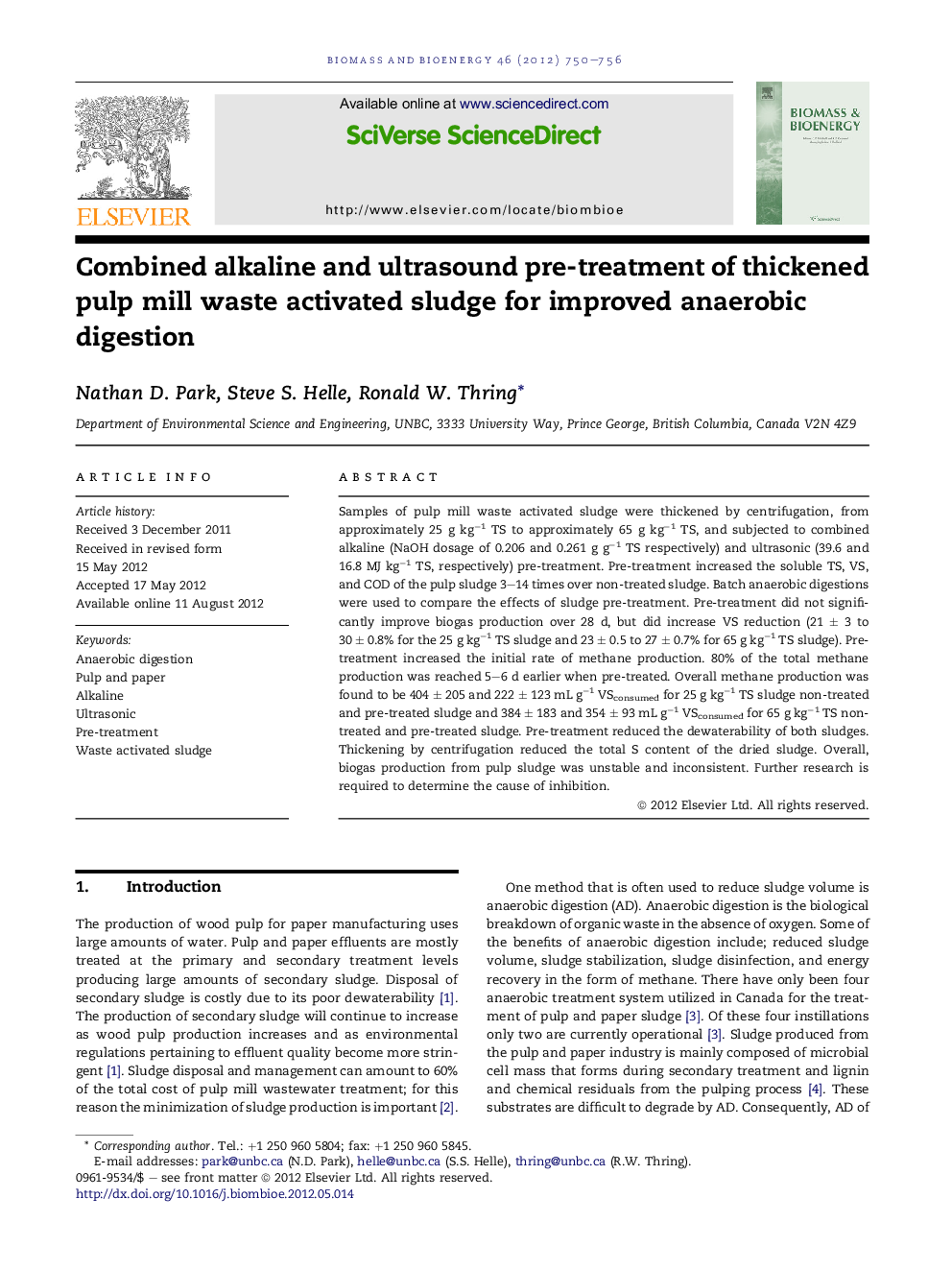| Article ID | Journal | Published Year | Pages | File Type |
|---|---|---|---|---|
| 677208 | Biomass and Bioenergy | 2012 | 7 Pages |
Samples of pulp mill waste activated sludge were thickened by centrifugation, from approximately 25 g kg−1 TS to approximately 65 g kg−1 TS, and subjected to combined alkaline (NaOH dosage of 0.206 and 0.261 g g−1 TS respectively) and ultrasonic (39.6 and 16.8 MJ kg−1 TS, respectively) pre-treatment. Pre-treatment increased the soluble TS, VS, and COD of the pulp sludge 3–14 times over non-treated sludge. Batch anaerobic digestions were used to compare the effects of sludge pre-treatment. Pre-treatment did not significantly improve biogas production over 28 d, but did increase VS reduction (21 ± 3 to 30 ± 0.8% for the 25 g kg−1 TS sludge and 23 ± 0.5 to 27 ± 0.7% for 65 g kg−1 TS sludge). Pre-treatment increased the initial rate of methane production. 80% of the total methane production was reached 5–6 d earlier when pre-treated. Overall methane production was found to be 404 ± 205 and 222 ± 123 mL g−1 VSconsumed for 25 g kg−1 TS sludge non-treated and pre-treated sludge and 384 ± 183 and 354 ± 93 mL g−1 VSconsumed for 65 g kg−1 TS non-treated and pre-treated sludge. Pre-treatment reduced the dewaterability of both sludges. Thickening by centrifugation reduced the total S content of the dried sludge. Overall, biogas production from pulp sludge was unstable and inconsistent. Further research is required to determine the cause of inhibition.
► Pre-treatment increased VS removal in both the thickened (by 4%) and non-thickened sludge (by 9%). ► Pre-treatment did not increase the overall methane yield, but did increase the initial rate of methane production. ► 80% of total methane/biogas production was reached 5.5–6.5 days faster when pre-treated; therefore reducing the hydraulic retention time. ► Pre-treatment decreased the dewaterability of the sludge.
